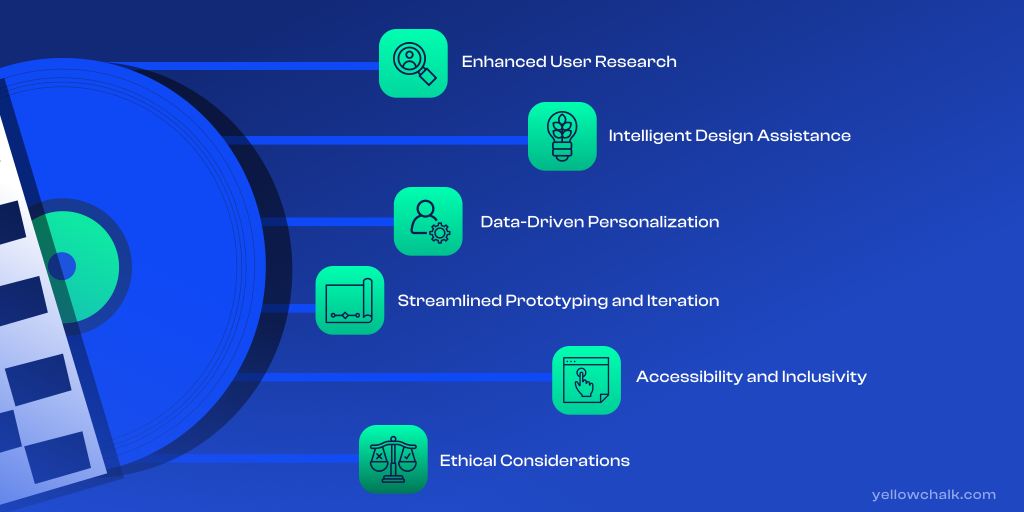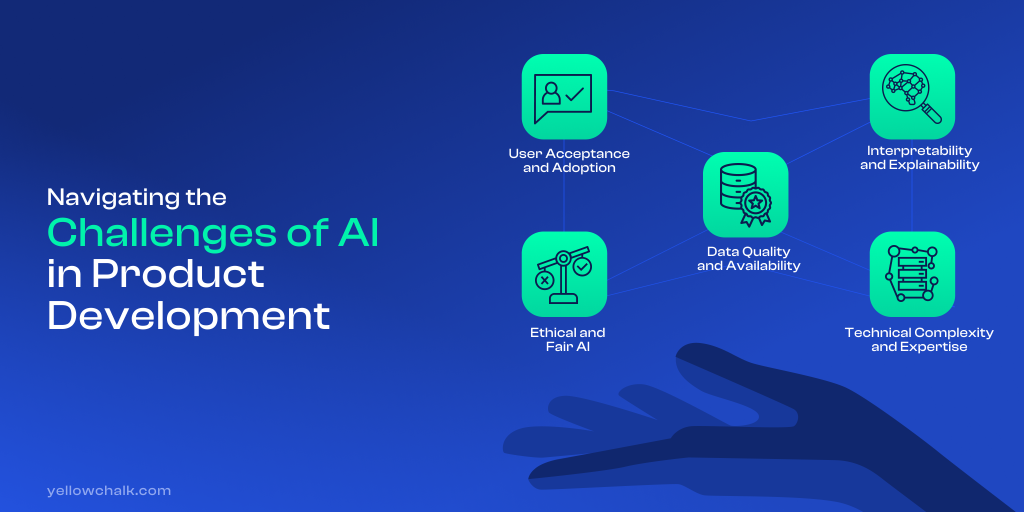GOT A UI/UX
DESIGN PROJECT?
The Profound Impact of AI in UX Design

The impact of AI on UX design is a question that has captured the attention of many UX and product teams, signaling the dawn of a new era with the emergence of artificial intelligence tools. As AI gains prominence in product design, it becomes increasingly crucial to harness its potential to the fullest.
In this article, we will closely examine the ways in which AI shapes and propels UX design. We will delve into the challenges that come with incorporating AI and explore its various applications in the realm of product design. Let’s dive in!
Unveiling the Influence of AI on UX Design

Introduction
The realm of User Experience (UX) design is undergoing a transformative phase with the integration of Artificial Intelligence (AI). As AI technology continues to evolve, it is reshaping the way designers approach UX, offering new possibilities and exciting challenges. In this blog, we will explore the profound impact of artificial intelligence on UX design, highlighting its potential benefits and the considerations it entails. Let’s dive in and discover the world where AI meets UX!
Enhanced User Research
AI empowers UX designers by providing sophisticated tools for user research. AI-driven sentiment analysis and pattern recognition unveil valuable insights into user preferences, pain points, and behavior, leading to more informed design decisions.
We also helped design a platform for one of our client Prodigal AI, which is doing a pioneering job with the endless possibilities of generative AI.
Intelligent Design Assistance
AI serves as a valuable ally for designers, offering intelligent design assistance throughout the creative process. AI-powered design tools can generate design suggestions, recommend color palettes, and provide layout options based on established design principles. This collaboration between AI and designers fosters a dynamic and productive workflow, freeing up time for designers to focus on higher-level creative thinking.
Data-Driven Personalization
AI enables personalized user experiences by leveraging data and machine learning algorithms. By analyzing user behavior, preferences, and historical data, AI can deliver tailored content, recommendations, and interfaces. This level of personalization enhances user engagement, satisfaction, and ultimately, drives customer loyalty.
Streamlined Prototyping and Iteration
AI expedites the prototyping and iteration phase of UX design. AI-powered tools can automatically generate interactive prototypes based on wireframes or sketches, saving significant time and effort. Designers can quickly test and refine their concepts, allowing for rapid iterations and faster feedback loops, resulting in improved design outcomes.
Accessibility and Inclusivity
AI plays a vital role in making digital products more accessible and inclusive. Voice recognition and Natural Language Processing enable voice-controlled interfaces, benefiting users with disabilities or impairments. AI algorithms can automate captioning, suggest alt text for images, and analyse content readability, ensuring a more inclusive UX design.
Ethical Considerations
As AI becomes increasingly integrated into UX design, ethical considerations come to the forefront.
It is crucial to design AI-powered experiences with transparency, fairness, and responsible data handling in mind.
Challenges of AI in Product Development

As Artificial Intelligence (AI) continues to reshape the landscape of product development, it brings forth numerous opportunities and advantages. Nonetheless, along with its promise, AI also presents a unique set of challenges that product teams must address. In this blog, we will explore the key challenges of using AI in product development and provide insights on how to navigate them effectively. Now, let’s dive in!
Data Quality and Availability
One of the primary challenges in AI-powered product development is ensuring the availability and quality of relevant data. AI models heavily rely on large, diverse, and accurately labeled datasets for training. However, sourcing, curating, and maintaining such datasets can be a complex and resource-intensive task. It is crucial to invest time and effort in data collection, cleaning, and validation to ensure the reliability and effectiveness of AI algorithms.
Ethical and Fair AI
AI raises ethical concerns related to algorithmic bias, privacy, and transparency. Biased training data can result in AI models that perpetuate unfairness and discrimination. It is essential to address these biases and ensure fairness in algorithmic decision-making.
Transparency in AI systems, with clear explanations of how decisions are made, fosters user trust and helps mitigate ethical challenges.
Interpretability and Explainability
AI models often operate as complex ‘black boxes,’ making it challenging to interpret and explain their decision-making processes. Consequently, this lack of interpretability can pose challenges when justifying AI-driven recommendations or addressing user concerns. To effectively overcome this challenge, it is crucial to explore techniques for model interpretability. These techniques include generating explanations, providing transparency, and employing methods like LIME (Local Interpretable Model-Agnostic Explanations) or SHAP (SHapley Additive exPlanations).
User Acceptance and Adoption
Introducing AI-powered features or interfaces can be met with resistance or skepticism from users. Concerns about job displacement, privacy, or reliance on automated decision-making can affect user acceptance and adoption. To address this challenge, transparently communicate the benefits and limitations of AI to users.
Technical Complexity and Expertise
AI implementation requires specialized technical knowledge and expertise. Developing, training, and maintaining AI models demands a skilled team with expertise in machine learning, data science, and software engineering. It may be necessary to invest in upskilling or partnering with AI experts to overcome technical complexities and ensure successful AI integration within the product development lifecycle.
Conclusion
The impact of AI in UX design is nothing short of transformative. AI-driven technologies have redefined how designers approach personalisation, predictive analytics, accessibility, and workflow optimization. By harnessing the power of AI, UX designers have created more user-centric experiences that foster trust, empowerment, and loyalty among users. AI-generated art has also made getting complex illustrations done faster. As AI continues to advance, it will undoubtedly play an even more pivotal role in shaping the future of UX design. Consequently, this will lead to a more connected, accessible, and user-friendly digital world. Furthermore, embracing AI is not just an option; it is, in fact, a necessity for designers to stay ahead in this ever-evolving technological landscape.
The future of UX design is here, and it’s bright with possibilities.
